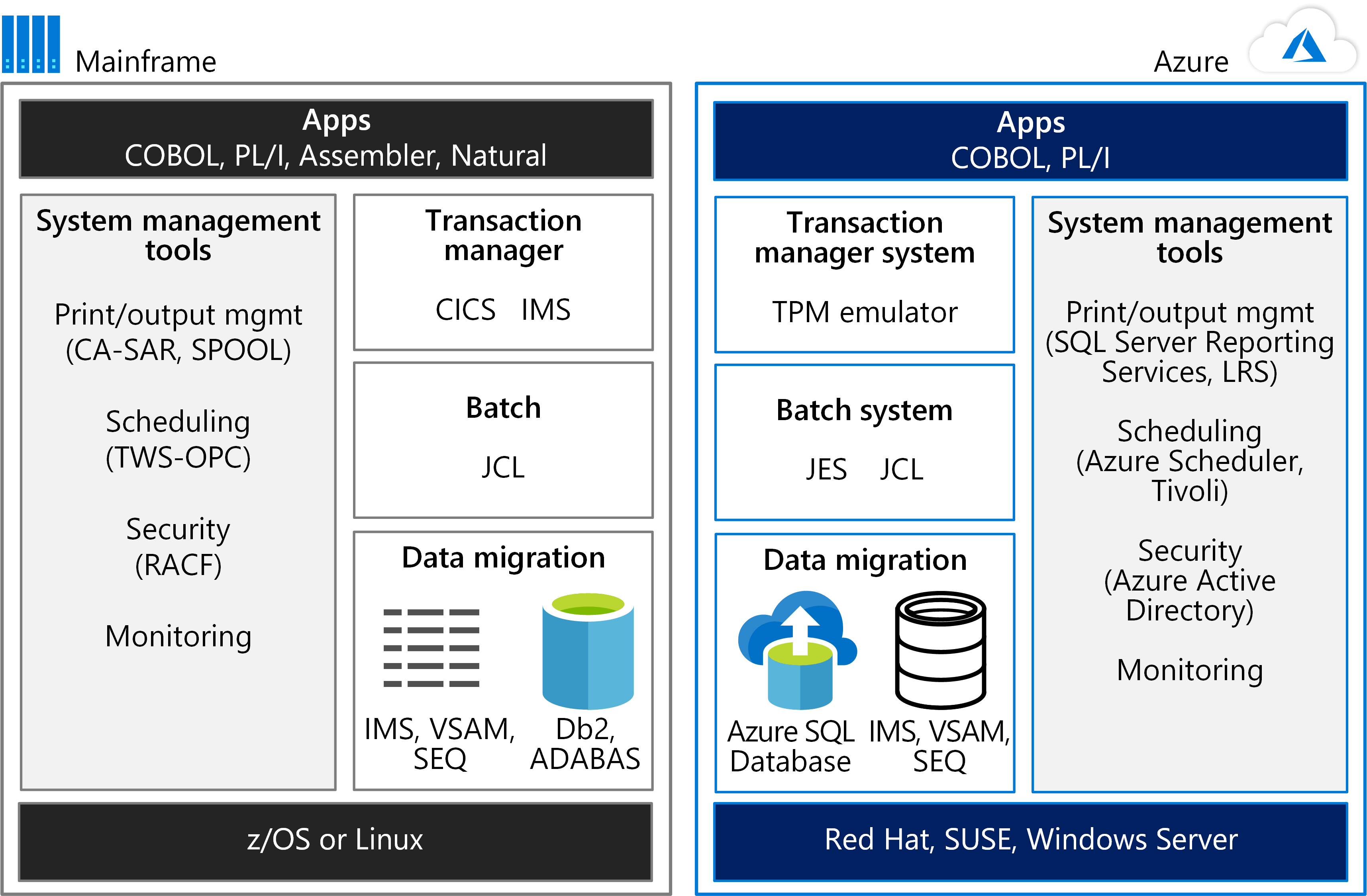Bridging Realms: Mainframe Migration Strategies for Cloud Success on Azure
 Pandian Ayyamperumal
Pandian Ayyamperumal
As businesses continue to embrace digital transformation, mainframe migration to cloud computing has become an increasingly popular trend. However, this shift can be daunting, especially when it comes to ensuring seamless integration and minimal disruption to existing systems and processes. In this article, we'll explore effective strategies for migrating mainframes to Microsoft Azure, enabling organizations to achieve cloud success while bridging the gap between legacy systems and modern technologies.
Assessing Your Current Environment
Before embarking on a mainframe migration journey, it's essential to understand your current environment and its complexities. Conduct a thorough assessment of your mainframe infrastructure, including applications, data, and underlying hardware. Identify any dependencies, interdependencies, and potential roadblocks that may impact the migration process. This exercise will help you determine the scope of the project, prioritize tasks, and create a comprehensive plan tailored to your organization's unique needs.

Choosing the Right Migration Path
There are several approaches to mainframe migration, each with its advantages and challenges. The most appropriate path depends on factors such as application complexity, data volume, and organizational goals. Let's examine some common migration paths:
Rehosting: Also known as "lift-and-shift," rehosting involves moving mainframe workloads directly to Azure without significant changes to the code or architecture. This approach is ideal for applications with fewer than 50 million lines of code (LOC) and relatively simple dependencies. Rehosting provides a quicker time-to-market but may require additional optimization efforts to ensure optimal performance in the cloud.
Replatforming: If your mainframe applications have more than 50 LOC or complex dependencies, re-platforming might be a better choice. This approach entails modifying the code and architecture to leverage cloud-native services and tools. Replatforming allows for improved scalability, security, and maintainability but requires a larger upfront investment in time and resources.
Refactoring: Refactoring involves transforming mainframe applications into modern, microservices-based architectures. This approach unlocks the full potential of cloud computing by allowing for greater agility, flexibility, and resilience. However, refactoring is typically the most resource-intensive option and demands a high degree of technical expertise.
Hybrid Integration: Many organizations opt for a hybrid approach, integrating their mainframe environments with cloud services. This strategy enables them to capitalize on the strengths of both worlds, leveraging the cloud for non-core functions while keeping sensitive or critical workloads on-premises.

Key Considerations for a Smooth Migration:
Whichever migration path you choose, consider these crucial factors to ensure a successful transition:
Data Management: Proper data management is critical to a smooth migration. Assess your data volumes, formats, and structures, and develop a strategy for data transfer, storage, and processing. Utilize Azure services like Azure Storage, Azure Databricks, or Azure Synapse Analytics to optimize data handling and analytics.
Security: Ensure the security and compliance of your migrated workloads by implementing robust identity and access management solutions, encryption, and network segmentation. Azure offers various security features, such as Azure Active Directory, Azure Firewall, and Azure Security Center, to safeguard your assets.
Networking: Seamlessly integrate your mainframe environments with Azure using dedicated connections like Azure ExpressRoute or virtual networks. These connections minimize latency and provide secure, private communication between on-premises infrastructure and Azure services.
Talent and Expertise: Mainframe migration projects demand specialized skills and knowledge. Collaborate with experienced professionals who possess a deep understanding of mainframe technology, cloud computing, and migration best practices. Microsoft offers various training programs and consulting services to help bridge skill gaps within your team.
Testing and Validation: Thorough testing and validation are essential to guarantee a successful migration. Create a comprehensive test plan that covers all aspects of your mainframe environment, including functionality, performance, and security. Leverage Azure DevOps and testing services like Azure Test Plans and Azure Load Testing to streamline the process.
Change Management: A well-planned change management strategy helps mitigate risks and ensures user adoption. Communicate the benefits and implications of the migration to stakeholders, provide adequate training, and monitor feedback throughout the process.
Continuous Improvement: Treat mainframe migration as an opportunity for continuous improvement by utilizing Agile approaches to identify areas for enhancement and implement meaningful changes that drive long-term success.
Conclusion:
In conclusion, mainframe data tier modernization to Azure requires careful planning, execution, and monitoring to ensure a successful migration. By following best practices, organizations can minimize risks, reduce costs, and improve the overall efficiency of their IT infrastructure.
Subscribe to my newsletter
Read articles from Pandian Ayyamperumal directly inside your inbox. Subscribe to the newsletter, and don't miss out.
Written by
